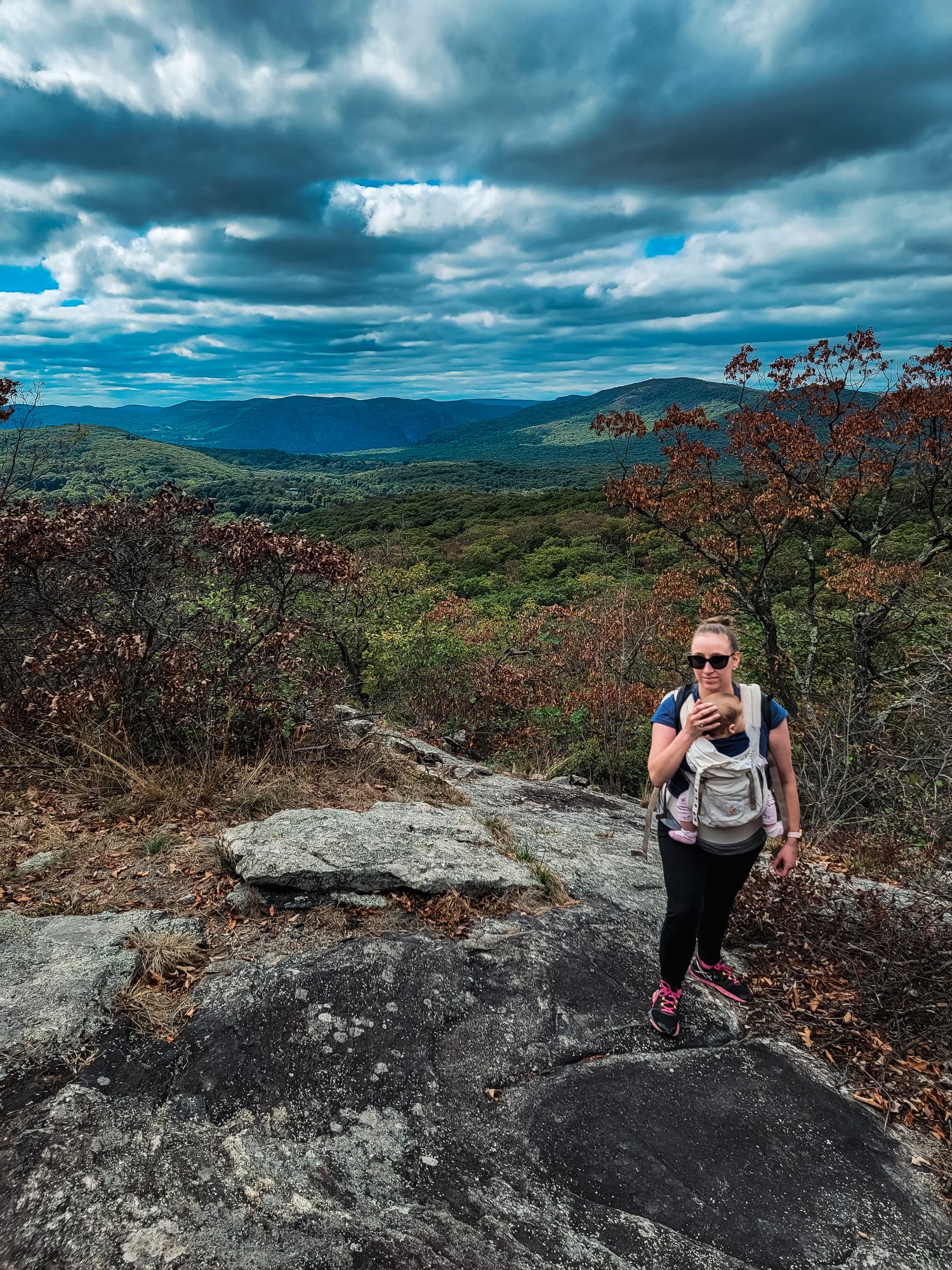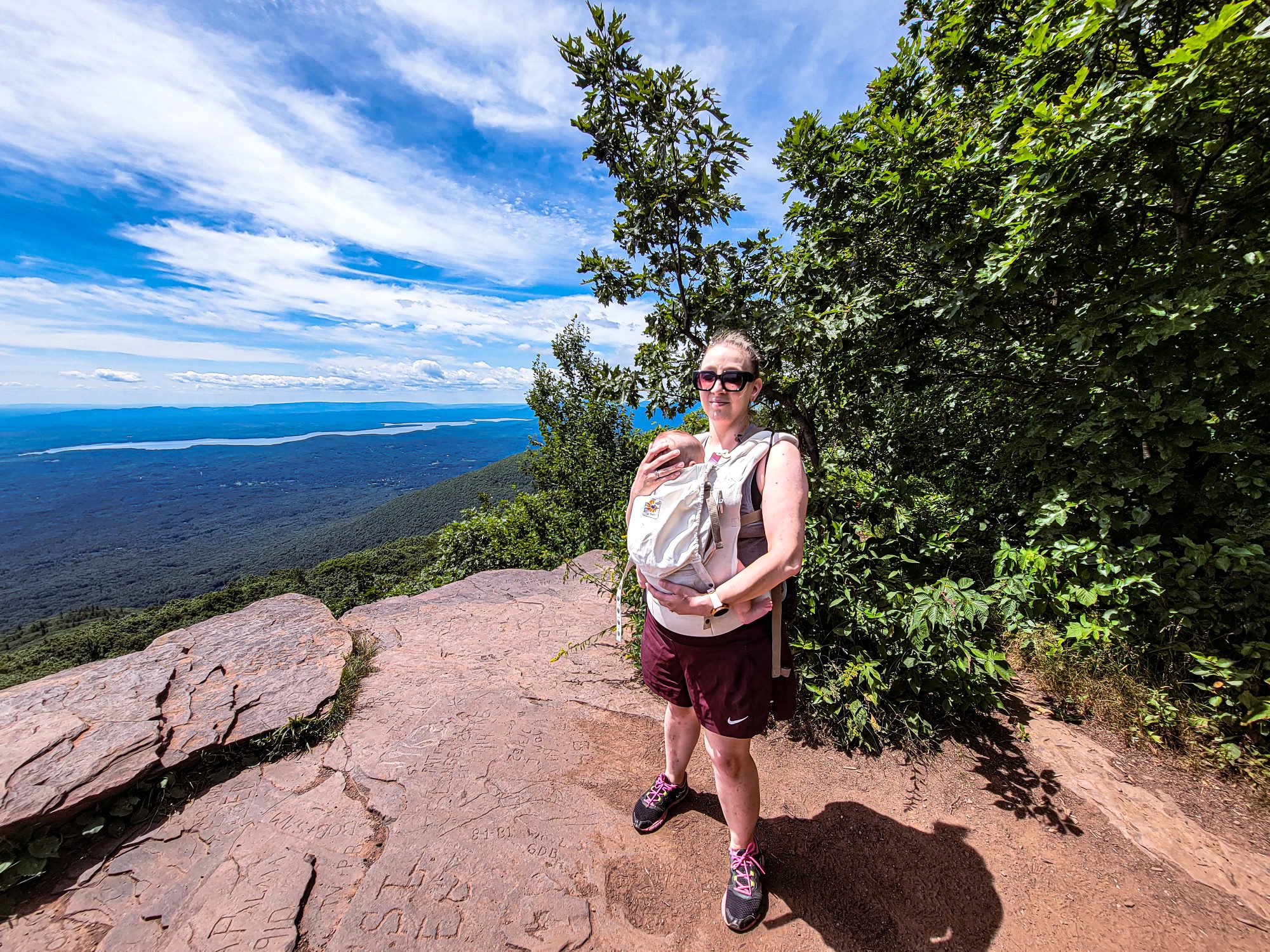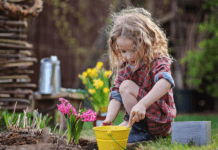After my daughter was born in 2022, I committed to be more active and challenge myself to try new things. I’d always loved hiking and started years back with easier local trails, taking my older child with me either in a carrier or stroller or walking along with me.
Today, I’ve worked up to doing longer, more challenging trails, and now have set a goal to maybe, just maybe, join the Catskills 3500 club. My kids may not be able to join me for every one of those hikes, but my youngest has climbed mountains in the Catskills and Hudson Highlands in her carrier, and my oldest is now traversing 2+ mile, moderately rated elevation trails.
When I used to see other parents hiking with their littles, I found it inspirational but unattainable. But it isn’t.
While every family is different, and not every kid (or adult) is cut out for mountain climbing, that isn’t what hiking is really about. Here are some tips that can help almost anyone get on the path to better health and natural exploration hiking as a family.
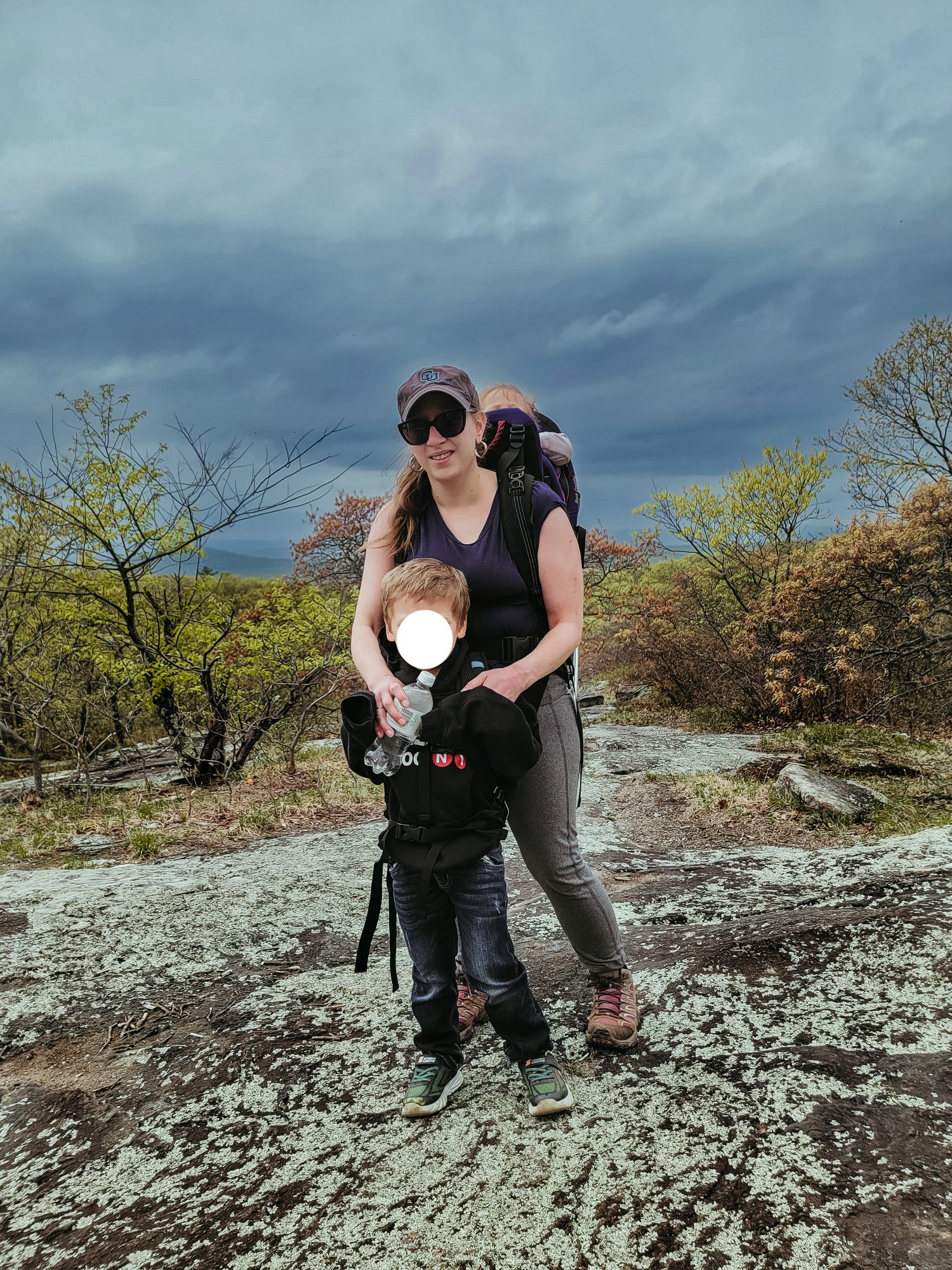
1. Babywearing.
Babywearing has made hiking much easier and more enjoyable. From freeing up my hands to allowing me to do hikes that my toddler isn’t able to walk on her own, babywearing has become a staple of my family hikes. It doesn’t hurt that it helps make the outing more of a workout, either! There are a variety of carriers on the market for babies and young kids. When selecting one for yourself, look for ergonomic ones that provide hip support for your little one, and allow you to keep your balance easily.
2. Start small.
You don’t have to start by climbing a mountain. Actually, you SHOULDN’T start by climbing a mountain, nor do you ever have to climb one to be a hiker. Focus on getting out into nature. The trail could be stroller friendly or just a few paces long. No start is too small to count. Your children will build up to longer trails in no time if that is your goal! And if they (or you) don’t want to? That is fine, too.
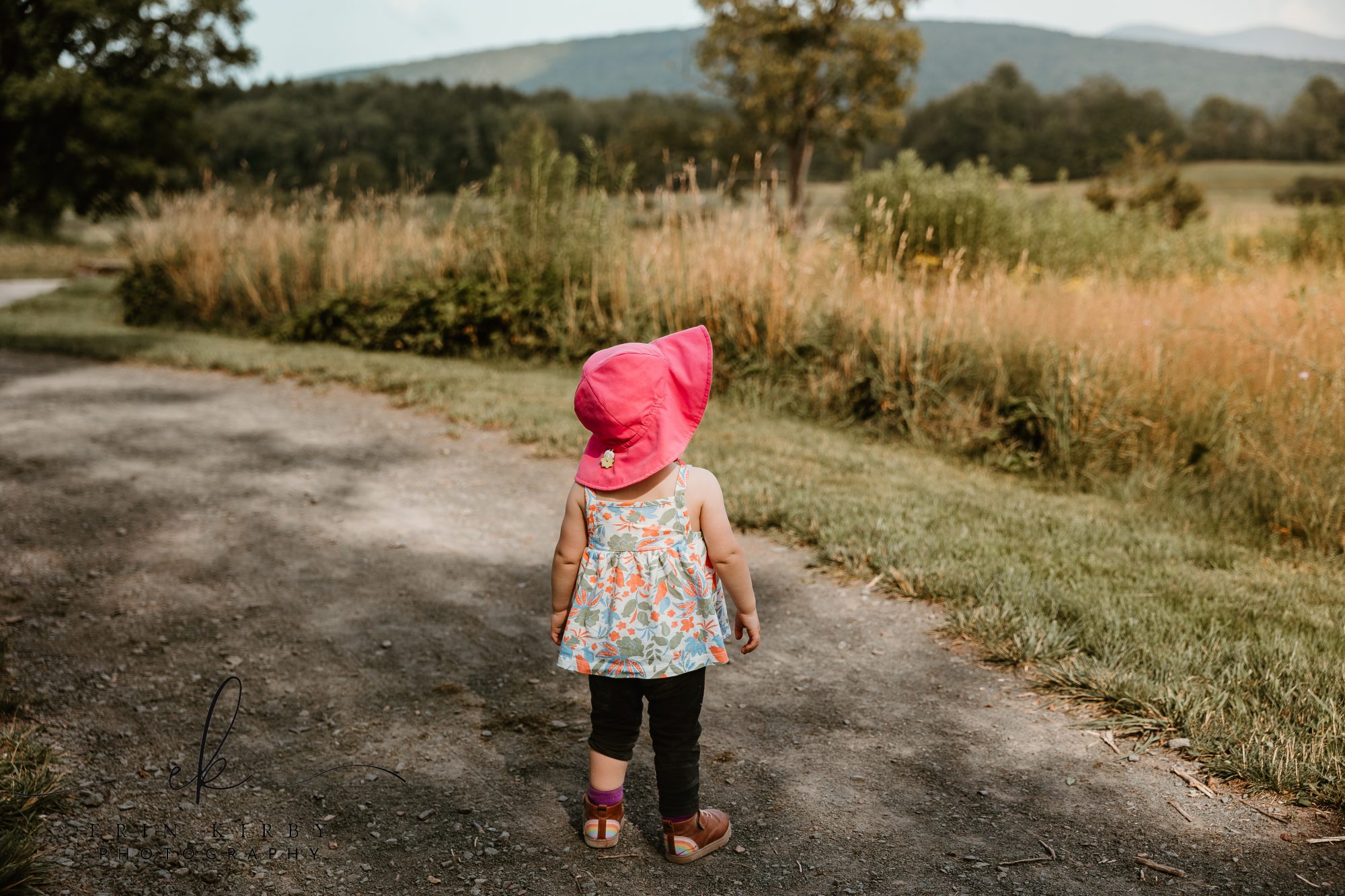

3. Bring snacks.
Hiking works up an appetite, especially for little kids. You can’t expect a hungry child to want to walk. Bring more snacks (and drinks) than you think you’ll need, and bring something for yourself, too! Just remember to carry your trash with you when you go or dump it in a barrel at the trailhead if one is available.
4. Expect to go slow.
It isn’t a race. Sure, it can sometimes feel tedious when a young child stops every couple of paces to check out a stick, a rock, or a flower. But these are perfect opportunities to practice mindfulness. Enjoy the experience with them. Talk about the things you see. Bring your experiences home and research together the interesting bug you saw. Or, point out things in nature that you and your child have read in books or seen on a TV program. There’ll be ample opportunities to use your hike as a learning experience!
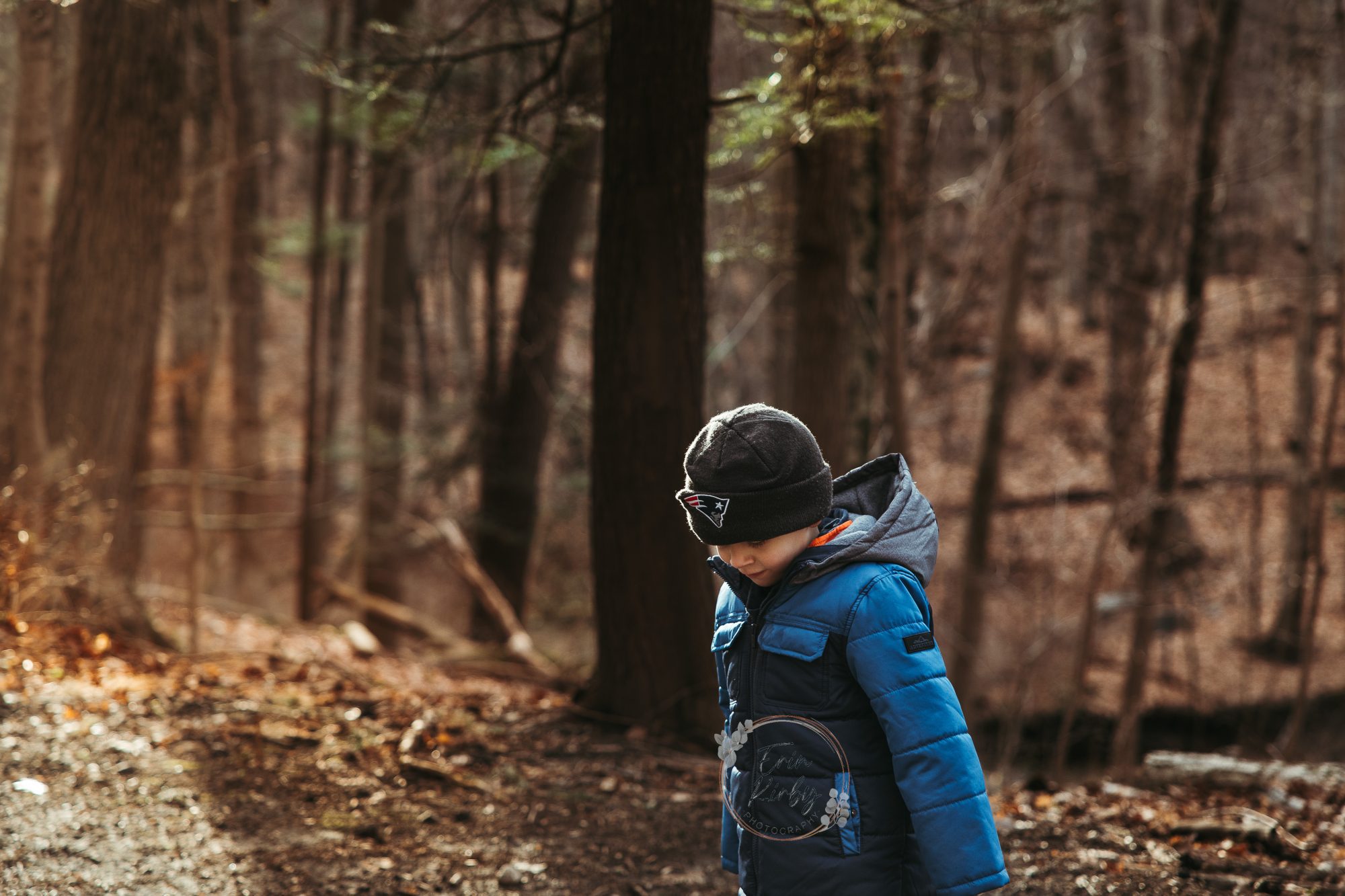

5. Teach your kids about Leave No Trace.
Leave No Trace is the practice of leaving the natural world exactly how you found it. There are some great resources out there to help kids learn about it, and no child is too small to start (check here, here, here, here, and here).
While you as a parent may or may not encourage following every single one of the principles to the purest extent (which prohibit things like climbing trees and rock collecting), even Leave No Trace ‘light’ makes a difference (you’ll see tons of debate about this in hiking groups, and I’m not going to take a stand either way). Whatever your beliefs, please always teach your children to obey the rules of the space you are in because they are there to protect the natural environment.
National Parks, for instance, don’t allow you to collect rocks and seashells, even if you don’t subscribe to the strict Leave No Trace guidelines. Furthermore, rules like staying on the trail aren’t just about protecting nature; they also protect you and your children from falls, becoming lost, and potentially dangerous animal encounters.
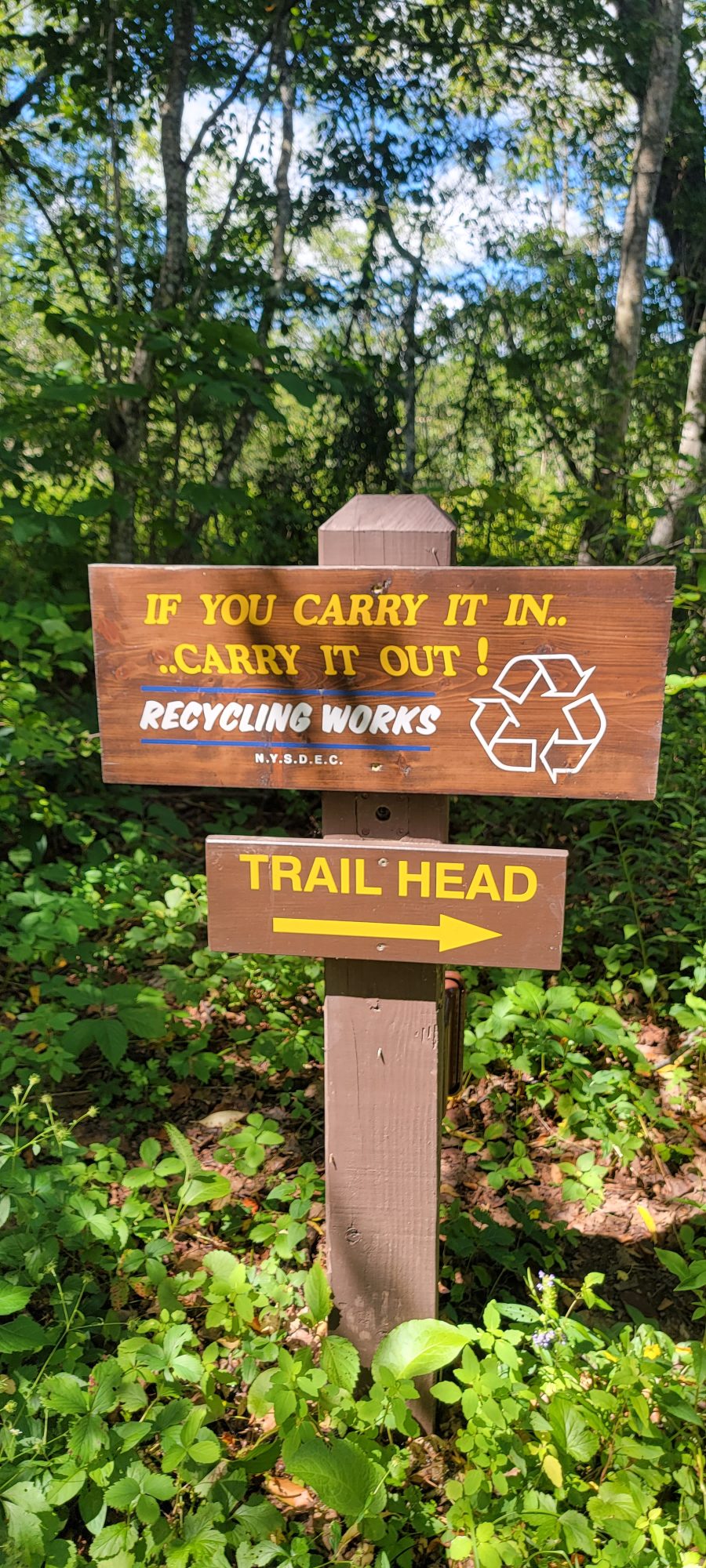

6. Pick a fun location.
We love picking trails with waterfalls, authorized swimming holes, rock scrambles, or old ruins. Having more to see than the woods motivates my kids to keep moving.
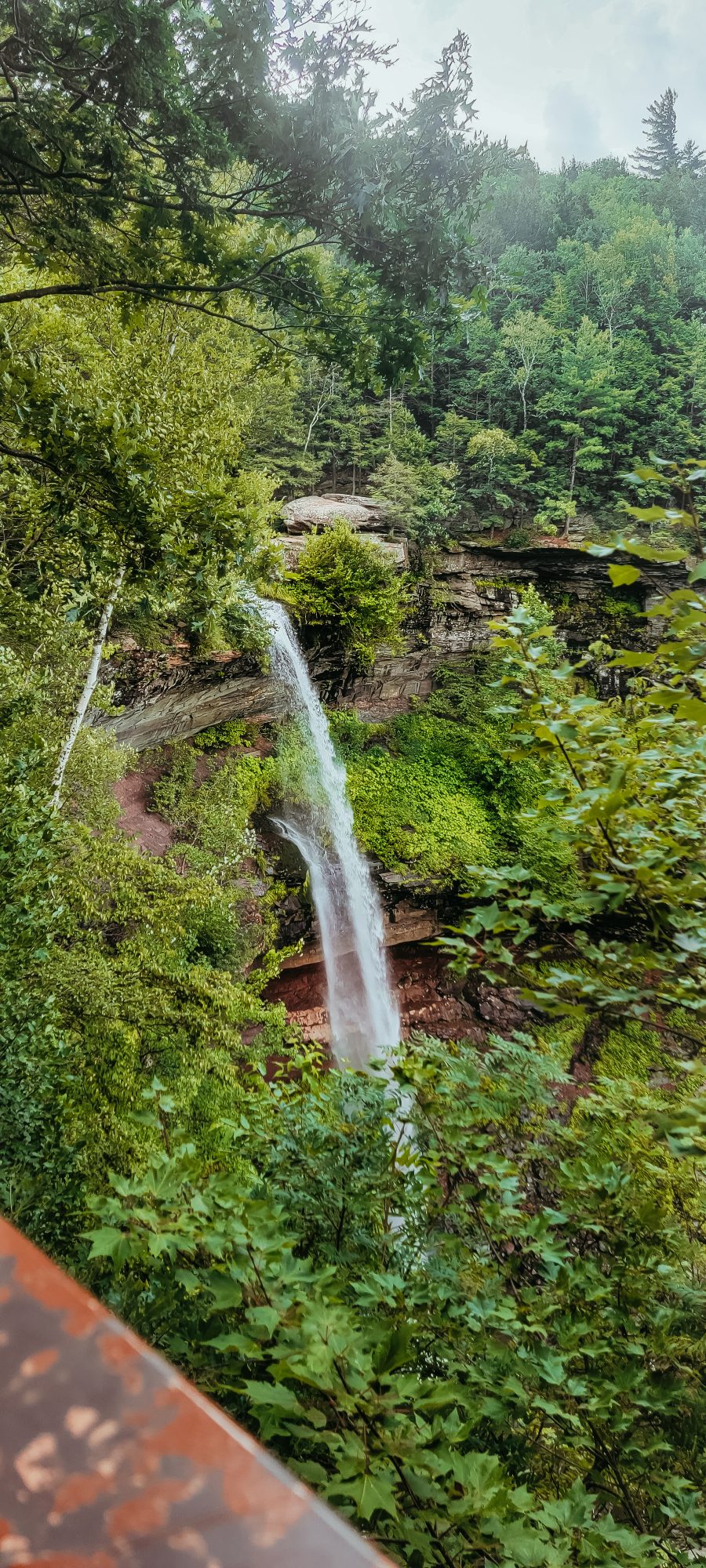

7. It is about the journey, not the destination.
You probably won’t be doing any major peak bagging with really young kids (though I know some families who do!). You may not even make it through whole trails. But hiking is about enjoying the journey, not just reaching some milestone. It is about experiencing nature, being mindful of your surroundings, and appreciating the great outdoors in its raw and wild glory. So get out there and enjoy where the wilderness (or that little patch of woods on the other side of town) takes you!













